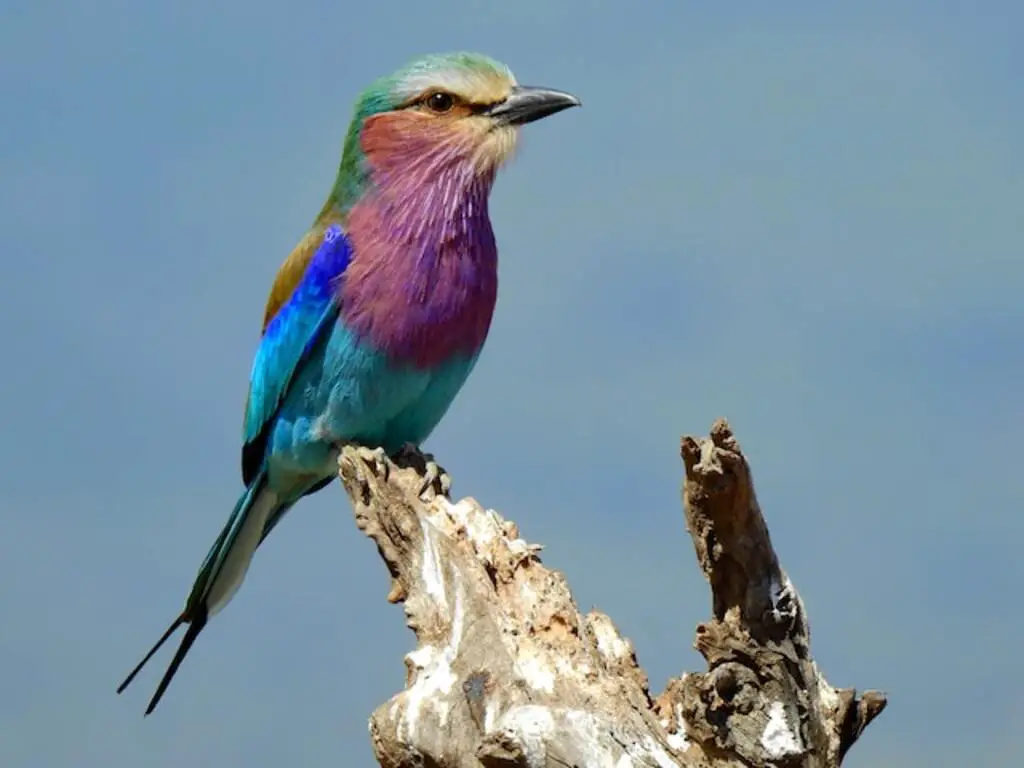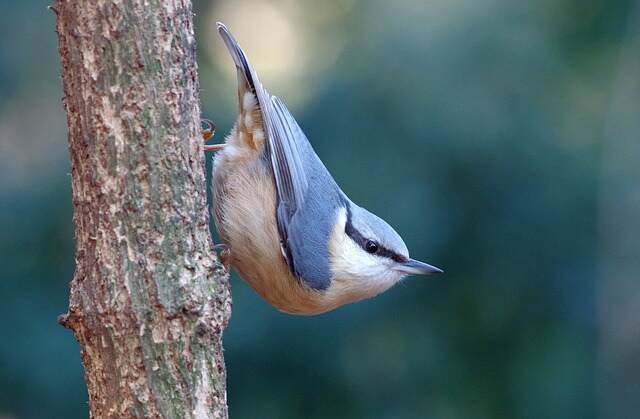If you’re a birdwatcher, you know that identifying birds can be challenging, especially when you encounter unfamiliar species in different habitats. Understanding the characteristics of various habitats and the bird species that inhabit them is essential for accurate identification.
In this article, we’ll discuss essential tips for identifying birds based on their habitats. By learning to recognize the physical features, behaviors, and calls of birds in different landscapes, you can enhance your birdwatching skills and confidently identify birds in the diverse habitats found throughout the United States.
Table of Contents
- 1 Key Takeaways
- 2 Tips for Identifying Birds by Their Habitat
- 3 The Importance of Habitat in Bird Identification
- 4 Forest Habitats and Bird Diversity
- 5 Wetland Habitats and Waterbirds
- 6 Grassland Habitats and Prairie Birds
- 7 Coastal Habitats and Seabirds
- 8 Mountain Habitats and Alpine Birds
- 9 Urban Habitats and City Birds
- 10 Farmland Habitats and Agricultural Birds
- 11 Deserts and Arid Habitats
- 12 Marshes and Marshland Birds
- 13 Conclusion
- 14 FAQs:
- 14.1 What are some tips for identifying birds by their habitat?
- 14.2 Why is understanding habitat important in bird identification?
- 14.3 What types of birds can be found in forest habitats?
- 14.4 How can I identify waterbirds in wetland habitats?
- 14.5 What are some characteristics of grassland habitats and the birds that inhabit them?
- 14.6 How can I identify seabirds in coastal habitats?
- 14.7 What types of birds can be found in mountain habitats?
- 14.8 Are there birds that thrive in urban environments?
- 14.9 What are some agricultural birds that can be found in farmland habitats?
- 14.10 Can birds be found in desert and arid habitats?
- 14.11 What are some marshland birds that can be found in marshes?
- 15 Author
Key Takeaways
- Understanding bird habitats is crucial for accurate bird identification.
- Observing the physical features, behaviors, and calls of birds can provide valuable clues.
- Different habitats attract specific bird species adapted to their unique environments.
- Learning to recognize bird species in different landscapes can enhance your birdwatching skills.
- By exploring various habitats and observing the birdlife found within, you can continue to learn and grow as a birder.
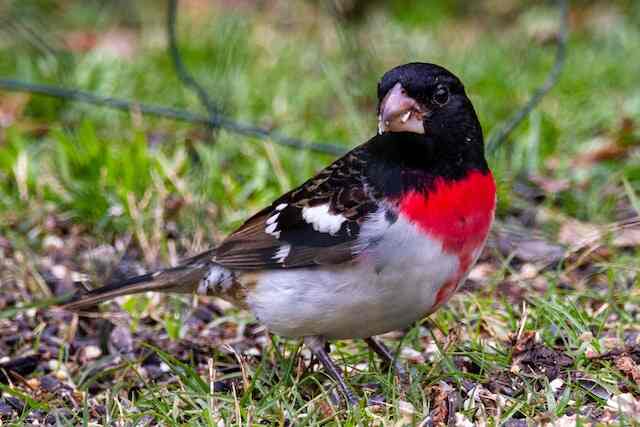
Tips for Identifying Birds by Their Habitat
Identifying birds by their habitat is an effective way to narrow down species. To succeed in this method, pay attention to the surroundings where you spot the bird. Different birds prefer specific environments – forests, wetlands, or urban areas.
For instance, a bird found near water bodies might be a waterfowl species, while those in wooded areas could be songbirds. Take note of the habitat’s characteristics, such as trees, water sources, or elevation. This valuable contextual information can be crucial in correctly identifying the bird you’ve encountered.
The Importance of Habitat in Bird Identification
Identifying birds based on their habitat features is crucial for accurate birding. Each bird has a specific set of preferences for their living environment, depending on their physical adaptations, diet, and behavior. By recognizing the habitat characteristics of different bird species, one can increase their chances of accurately identifying them.
Birding by habitat is a technique used by experienced birdwatchers to spot birds in their preferred settings. By focusing on a particular habitat, birders increase their chances of identifying specific bird species that are adapted to that environment. This technique is particularly helpful when searching for rare bird species that are particular to specific habitats.
When out in the field, birding tips for identifying birds based on their habitat include observing their physical characteristics, such as beak shape, wingspan, and plumage, as well as studying their behavior, such as flight patterns, feeding habits, and vocalizations. These clues can provide important information about the bird’s preferred habitat and aid in accurate identification.
Forest Habitats and Bird Diversity
Forests offer a diverse range of habitats for bird species, with each type of forest supporting unique birdlife. Broadly, forests can be categorized into deciduous, coniferous, and mixed forests. Deciduous forests, as the name suggests, are characterized by trees that lose their leaves in the fall.
These forests are abundant in the eastern United States and are typically home to bird species such as woodpeckers, thrushes, and warblers. Coniferous forests, on the other hand, are dominated by evergreen trees that retain their needles throughout the year.
Birds such as the crossbill, pine siskin, and boreal chickadee are commonly found in these forests.
Mixed forests, as the name suggests, are a combination of deciduous and coniferous trees. These forests offer a diverse range of habitats for birds, supporting species such as nuthatches, flycatchers, and vireos.
Birds in forest habitats can be identified based on their behaviors, songs, and physical characteristics. For instance, woodpeckers are known for their drumming sounds, while thrushes have a melodious, flute-like song. Warblers, on the other hand, are small and agile birds with distinctive plumage patterns.
When bird watching in forests, pay attention to the type of trees, foliage cover, and understory growth. These features can offer important clues that aid in identifying different bird species.
Wetland Habitats and Waterbirds
Wetlands are unique habitats that support a variety of bird species, including waterbirds. These habitats can be categorized into two main types: freshwater wetlands and saltwater wetlands. Freshwater wetlands, such as marshes and swamps, are home to birds such as herons, egrets, and rails. Saltwater wetlands, such as salt marshes and mangrove swamps, are home to birds such as gulls, terns, and shorebirds.
The physical features of a wetland can provide valuable clues about the bird species that inhabit it. For example, waterbirds that feed by wading in shallow water have long legs and toes that enable them to stand and move easily in muddy or marshy habitats. Additionally, the size and shape of a bird’s bill can indicate its feeding behavior and the types of food it consumes. For instance, birds with long, thin bills, such as sandpipers and snipes, use their bills to probe the mud for insects and other invertebrates.
In addition to physical traits, the calls and behaviors of waterbirds can also help identify them by habitat. For instance, American coots are known for their distinctive calls, which can be heard from far away. These birds are often found in shallow wetlands with abundant aquatic vegetation, where they feed on aquatic plants and invertebrates.
Overall, wetlands are rich and diverse habitats that offer ample opportunities for birdwatching and identification. By understanding the unique features of freshwater and saltwater wetlands, you can confidently identify the various waterbird species that call these habitats home.
Grassland Habitats and Prairie Birds
Grasslands and prairies are vast open landscapes that support unique bird species. Identifying these birds can be challenging, but by paying attention to their behaviors, calls, and physical features, you can enhance your birding skills. Here are some birding tips for identifying birds in grasslands and prairies:
Learn about the characteristics of grassland habitats
Grasslands and prairies are characterized by their open landscapes with low-growing vegetation. These habitats can include tallgrass prairies, shortgrass prairies, and mixed-grass prairies, each with their own unique bird species. By understanding the habitat characteristics, you can narrow down the potential bird species you may encounter.
Pay attention to bird calls
Grassland birds often have distinctive calls that can help you identify them. For example, the western meadowlark has a distinct flute-like call, while the grasshopper sparrow has a buzzy trill. Learning these calls can help you identify birds even if you can’t see them.
Observe bird behaviors
Grassland birds have behaviors that are adapted to open landscapes. For example, many birds such as the horned lark and the meadowlark often perch on fence posts or other elevated objects. By observing these behaviors, you can make a positive identification.
Look for physical features
Grassland birds have physical features that set them apart from other bird species. For example, the upland sandpiper has a unique shape with a long neck and small head. The bobolink has a distinctive color pattern, with black on the head and white on the back. By studying these features, you can identify bird species confidently.
Coastal Habitats and Seabirds
Coastal environments provide ideal habitats for a diverse population of bird species, including seabirds. These habitats are typically characterized by the presence of saltwater, such as oceans, bays, or estuaries, and may include beaches, cliffs, or rocky shores. Understanding the unique characteristics of these environments can help identify seabirds based on their physical adaptations, calls, and behaviors.
Physical Characteristics of Seabirds
Seabirds have several physical adaptations that allow them to thrive in coastal habitats. These adaptations include webbed feet, which enable them to swim and dive for fish, salt glands that allow them to excrete excess salt, and waterproof feathers that keep them insulated from cold water and wind. Seabirds range in size, from small auks and puffins to larger gulls and pelicans.
Bird Identification Tips
Identifying seabirds can be challenging, as many species may appear similar at first glance. However, by observing their behavior, flight patterns, and physical features, it is possible to differentiate between different species.
Flight patterns can be a useful way to identify seabirds. Some species, such as gulls or terns, may fly in a back-and-forth motion over the water’s surface, while others, such as pelicans or gannets, may dive headfirst into the water. Observing feeding behaviors, such as the way a bird swims or the types of fish it catches, can also help with identification.
Physical features such as plumage and bill shape can also provide useful clues. For example, the black and white plumage of common terns is distinct from the brown and white plumage of arctic terns. Similarly, the bright orange bill of a puffin is unique and easy to spot.
Summary
Coastal habitats offer a rich diversity of bird species, including beautiful and unique seabirds. By understanding the characteristics of these environments and observing the behaviors, physical features, and calls of seabirds, birdwatchers can enhance their identification skills and better appreciate the diversity of birds found in coastal habitats.
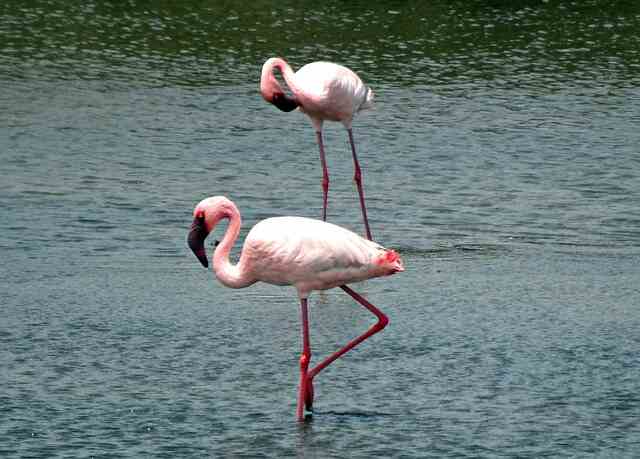
Mountain Habitats and Alpine Birds
Mountains and alpine regions are unique habitats for many bird species adapted to high elevations. These habitats are characterized by cold temperatures, low oxygen levels, and harsh weather conditions, which have shaped the physical features and behaviors of birds that call them home.
Adaptations of Alpine Birds
Alpine birds have many physical adaptations that help them survive in high altitude environments. For example, they may have shorter wings and tails, which helps them maneuver through the air in thin air. They may also have thicker feathers for insulation and stronger legs and feet for walking on rocky terrain.
Additionally, alpine birds have unique behaviors and calls that reflect their adaptation to this habitat. Some alpine bird species, such as the white-tailed ptarmigan, change their plumage color to blend in with the snow during winter. Others, like the American pipit, have distinctive calls that carry over long distances in the open landscape.
Birding by Habitat Clues
When birding in mountain habitats, pay attention to the characteristics of the surrounding environment. These may include the altitude, rock formations, and plant species. Look for birds perched on rocks or soaring in the sky, as these may be indicators of alpine species.
Listen for the calls of alpine birds, which may be distinct from other habitats. Some alpine birds have calls that mimic the sounds of the wind and rocks, while others may sound like whistles or trills.
Finally, observe the physical features of birds closely, as these can provide clues to their adaptation to the alpine habitat. Look for birds with thick feathers, short wings, and strong legs, which may indicate that they are adapted to high altitudes.
Urban Habitats and City Birds
Contrary to popular belief, urban environments can be thriving habitats for bird species. Many birds have adapted to city living, taking advantage of the abundant food sources and nesting opportunities.
Common city birds include pigeons, sparrows, finches, and starlings. These birds have adapted to urban environments by foraging for scraps of food and nesting in buildings and other structures.
Identifying city birds can be a fun challenge for birdwatchers. Look for clues such as flock size, behavior, and plumage. For example, pigeons often gather in large groups, while sparrows and finches are more commonly seen in pairs or small flocks.
Pay attention to bird songs and calls, which can provide helpful clues to a bird’s identity. City birds often have unique vocalizations to adapt to the noisy urban environment.
Overall, bird watching by habitat is an excellent way to observe the diverse birdlife found in cities and towns. Keep an eye out for your neighborhood birds and continue to learn about their fascinating adaptations to urban environments.
Farmland Habitats and Agricultural Birds
Farmland and agricultural areas attract a variety of bird species adapted to open fields and cultivated landscapes. These habitats provide ample food sources and cover for birds to breed and forage. Understanding the characteristics of farmland habitats can help you identify the birds that call these areas home.
Identifying birds by habitat features is especially useful in farmland habitats, as certain species have distinct physical and behavioral adaptations for foraging on crops and grains. For example, American Goldfinches are often found in fields with thistles and sunflowers, as they feed on the seeds of these plants. Meanwhile, Horned Larks can be identified by their distinctive calls and preference for open fields with short grass.
Other common bird species found in farmland habitats include the Barn Owl, Northern Harrier, and Eastern Meadowlark. These birds all have unique plumage and behaviors that can help you identify them. For instance, the Barn Owl has a heart-shaped face and feeds mostly on small rodents, while the Northern Harrier has a distinctive white rump and hunts small mammals and birds.
By paying attention to the clues provided by farmland habitat features, such as crop types and field size, and observing the behaviors and physical features of birds, you can enhance your bird identification skills in these unique habitats.

Deserts and Arid Habitats
Desert and arid habitats are unique environments that are home to a variety of bird species adapted to extreme conditions. These habitats are characterized by their low rainfall, high temperatures, and sparse vegetation. Adaptations for survival in these harsh environments include specialized beak shapes for feeding on tough desert plants, the ability to survive without water for long periods, and the ability to fly long distances to find food and water.
Identifying birds in these habitats can be challenging due to their subtle plumage and reserved behavior. However, by paying attention to specific bird characteristics, you can successfully identify them. Look for birds with muted colors such as browns, grays, and tans, as these colors help them blend into their dry surroundings.
Another way to identify birds in these environments is by listening to their calls. Some species of desert birds have adapted to the silence of the desert and have developed unique calls to communicate with each other over long distances.
Some common bird species found in deserts and arid habitats include the Cactus Wren, Greater Roadrunner, and Gambel’s Quail. Each bird species has its own unique adaptations that allow it to survive in this extreme environment.
By understanding the bird habitat characteristics of deserts and arid habitats, you will be better prepared to identify the bird species that call these environments home.
Marshes and Marshland Birds
Marshes and marshlands provide important habitats for various bird species, including waders and waterfowl. To identify these birds, it’s essential to understand the unique characteristics of marsh environments and the behaviors, physical features, and calls of the birds that reside there.
Here are some birding tips for identifying marshland birds:
- Observe the birds’ feeding behaviors – many marshland birds are waders that forage for food in shallow water or mudflats.
- Look for distinctive plumage – many marshland birds have long legs and necks, and some have striking colors or patterns on their feathers.
- Listen for calls and songs – marshland birds have unique vocalizations that can help you identify them.
Some common marshland birds in the United States include herons, egrets, rails, coots, and ducks. Keep in mind that some species may be difficult to distinguish from one another, so it’s important to pay close attention to the specific habitat and behaviors of each bird you encounter.
Conclusion
Identifying birds by their habitat is a valuable skill for any birdwatcher. By understanding the relationship between birds and their environments and by paying attention to their physical features, behaviors, and calls, you can confidently identify bird species in diverse landscapes.
Remember to keep these tips in mind during your birding adventures:
- Familiarize yourself with the characteristics of different habitats
- Observe the behaviors, physical features, and calls of birds
- Use field guides and other resources to deepen your knowledge
- Practice, practice, practice!
Enhancing your birdwatching skills can be a lifelong pursuit, and the more you learn, the more fascinating and enjoyable your birding experiences will be. So get out there and discover the amazing world of birds!
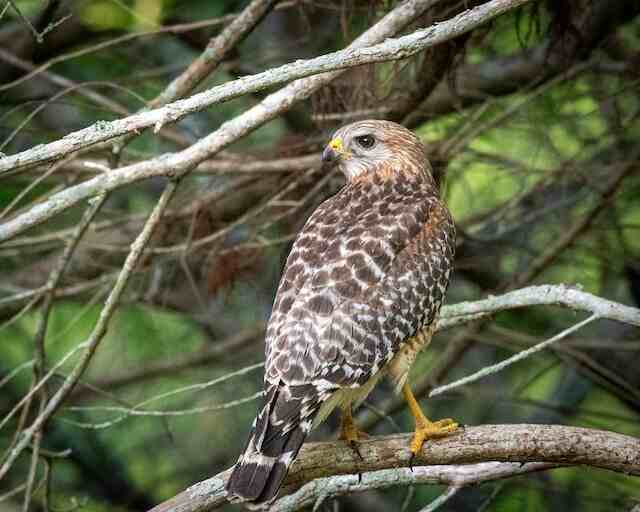
FAQs:
What are some tips for identifying birds by their habitat?
To identify birds based on their habitat, observe their preferred habitats and look for clues such as vegetation type, water sources, or specific geographic locations. Pay attention to the behaviors, physical features, and calls of the birds to help narrow down the species that are likely to be present in that habitat.
Why is understanding habitat important in bird identification?
Understanding the relationship between birds and their habitat is crucial because birds have specific habitat preferences. By knowing the characteristics of different habitats, you can narrow down the potential species and make more accurate identifications. Habitat can provide valuable information about a bird’s behavior, physical adaptations, and even its song.
What types of birds can be found in forest habitats?
Forests are home to a wide variety of bird species. You can find songbirds like warblers, thrushes, and woodpeckers, as well as raptors like owls and hawks. Certain forest types may attract specific species, so understanding the characteristics of different forests can help in identifying the birds that inhabit them.
How can I identify waterbirds in wetland habitats?
Wetlands are important habitats for waterbirds such as ducks, geese, herons, and egrets. To identify these birds, pay attention to their plumage colors and patterns, bill shapes, and feeding behaviors. Some waterbirds also have specific calls or flight patterns that can aid in identification.
What are some characteristics of grassland habitats and the birds that inhabit them?
Grasslands and prairies are open landscapes that attract bird species adapted to these environments. Look for birds with long legs for walking through the grass, aerial foragers like swallows, or ground-dwelling species like sparrows. Pay attention to the bird’s behaviors, physical features, and calls to help identify them.
How can I identify seabirds in coastal habitats?
Coastal habitats offer a diverse range of bird species, including seabirds. Look for birds with long wings for soaring over the ocean, distinctive plumage, and unique behaviors such as diving or floating on the water’s surface. Seabirds often have distinct flight patterns and feeding behaviors that can help in their identification.
What types of birds can be found in mountain habitats?
Mountains and alpine regions provide habitats for birds adapted to high elevations. Look for species with physical adaptations like thick feathers or specialized beaks for feeding in mountainous environments. Pay attention to their calls, behaviors, and physical features such as coloration to help identify them.
Are there birds that thrive in urban environments?
Yes, even in urban environments, birds can thrive and adapt. Common species found in cities and towns include pigeons, sparrows, starlings, and various songbirds. Look for birds that have adapted to urban habitats by nesting on buildings, foraging in parks, or utilizing other human-made structures.
What are some agricultural birds that can be found in farmland habitats?
Farmland and agricultural areas attract bird species adapted to open fields and cultivated landscapes. Look for birds that rely on insects or seeds for food or those that have adapted to farm structures like barns or silos. Pay attention to their foraging behaviors, plumage, and vocalizations to help identify them.
Can birds be found in desert and arid habitats?
Yes, desert and arid environments can be home to unique bird species adapted to extreme conditions. Look for birds with physical adaptations like long legs for walking on sand or specialized beaks for feeding on cacti. Pay attention to their calls, behaviors, and physical features to help identify desert birds.
What are some marshland birds that can be found in marshes?
Marshes and marshlands provide important habitats for various bird species, including waders and waterfowl. Look for birds with long legs for wading or swimming, special bill shapes for feeding in water, and distinctive plumage. Pay attention to their unique behaviors, calls, and feeding habits to help identify them.

